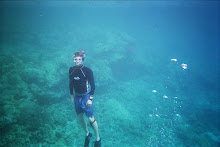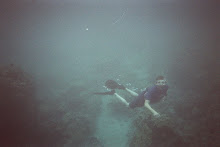I love adventure stories, always have and always will. Homer's
Odyssey, Edgar Rice Burroughs'
Tarzan of the Apes, and Robert Louis Stevenson's
Treasure Island have been the stories with the earliest and longest holds on me. I think the version of Homer I first read was called
The Adventures of Ulysses, giving the Roman name for the ancient Greek hero; someday I'll track down a copy. Here I want to share a little about
Treasure Island, particularly two moments in the very first chapter of that book.
Read the book's opening words:
Squire Trelawney, Dr. Livesey, and the rest of these gentlemen having asked me to write down the whole particulars about Treasure Island, from the beginning to the end, keeping nothing back but the bearings of the island, and that only because there is still treasure not yet lifted,
I take up my pen in the year of grace 17--and go back to the time when my father kept the Admiral Benbow inn and the brown old seaman with the sabre cut first took up his lodging under our roof."
And that only because there is still treasure not yet lifted"! That phrase always catches me, holds me suspended in the literary-present, in the now and how, as if this adventure had really only just happened, as if Jim, the captain, the squire, the doctor, and the few surviving crew had only just returned, and as if I too could join the adventure, could seek out that treasure, the treasure not yet recovered. When I was a boy, I might not have noticed why that opening sentence meant so much to me (though I just might have, being attuned to the telling--not just the plotting--from an early age). If asked, I would have pointed to the treasure, but probably also to the names, the island, the inn, the sabre cut, and even the allure of the 18th-century setting, with one thing offered after another. Glorious abundance, yes, but the phrasing of that "treasure not yet lifted" is the skeleton key to the triple lock of the engaged imagination.
Here's another passage from a bit later in the first chapter. (Though not much later. Stevenson can move from action to reflection to action as fast as anyone, when he wants to.) I give you a half-paragraph to set up the contract between (the as-yet-unnamed) Billy Bones, the scarred and domineering lodger at the Benbow Inn, and young Jim, our narrator and prospective alter-ego, and then there's the paragraph of true interest for me:
He had taken me aside one day and promised me a silver fourpenny on the first of every month if I would only keep my "weather-eye open for a seafaring man with one leg" and let him know the moment he appeared. Often enough when the first of the month came round and I applied to him for my wage, he would only blow through his nose at me and stare me down, but before the week was out he was sure to think better of it, bring me my fourpenny piece, and repeat his orders to look out for "the seafaring man with one leg."
How that personage haunted my dreams, I need scarcely tell you. On stormy nights, when the wind shook the four corners of the house and the surf roared along the cove and up the cliffs, I would see him in a thousand forms, and with a thousand diabolical expressions. Now the leg would be cut off at the knee, now at the hip; now he was a monstrous kind of creature who had never had but the one leg, and that in the middle of his body. To see him leap and run and pursue me over hedge and ditch was the worst of nightmares. And altogether I paid pretty dear for my monthly fourpenny piece, in the shape of these abominable fancies.
I first taught Treasure Island back in 1997 as an experiment. (Consider how the book now is marketed as a children's book, consider how the language of the book is somewhat dated and demanding, and yet consider the presentation of characters in action, the sustained narrative, and the payoff of pirate treasure.) As I reread this book that had mattered so much to me, this paragraph about Jim's imagination really struck me as a mark of Stevenson's quality and as, say, one finger of the grip the book has had on me. Of course, I love pirate stories in general, but young Jim Hawkins is the particular focus here. You can tell by how Jim stands up for his silver fourpenny piece each month that he's a remarkable lad, but he isn't just courageous, isn't just proof against anxiety or fear, isn't just oblivious and intent on the cash. Jim Hawkins is observant, has pluck, and holds within him both the empathy and imagination that will be the guides for his every action, though he will also suffer for those guides, those gifts. I loved that Jim had these anxious fantasies, these nightmares of the engaged spirit, because that made him more human, though still heroic, made him more like myself, and therefore I could also be more like Jim, couldn't I?
Such reflections are no doubt standard fare, the stuff of anxious therapy and reveries of childhood. I put my thoughts about these passages here to mark, for myself, their importance, and to model such reflecting. I don't discount or undervalue how most of us can tell these same self-absorbed narratives of how stories worked on us and for us; I care quite a bit about how stories shape us and how we aid and abet such shaping. How can I ask my students and my friends to read any books at all if I am not honest with myself how books may matter? Are we less susceptible, less malleable, or less open to the shaping power of narrative as adults? I think that's a question only to be answered by each of us, for each of us.
There's far more to Treasure Island than these two short passages, and Jim's arc of growth provides one good reason to read this fine book. Still, don't forget the adventure, the pirates, the parrot, the Hispaniola, chests full of pieces of eight, Ben Gunn, Israel Hands, and Long John Silver himself. Long John Silver: Jim Hawkins' strange surrogate-father; trustworthy betrayer; handy, glib, and deftly brutal. Long John Silver, "the seafaring man with one leg," just may haunt your dreams too.
Stevenson, Robert Louis.
Treasure Island. New York: Signet, 1981.









